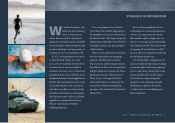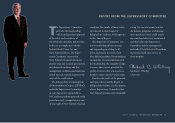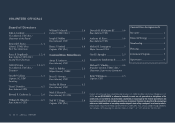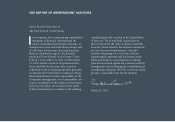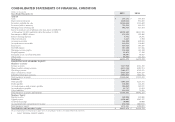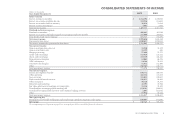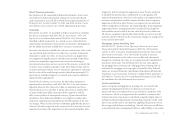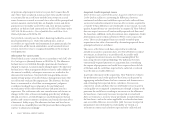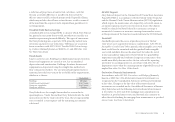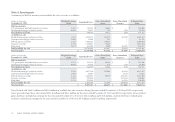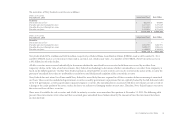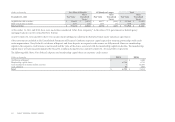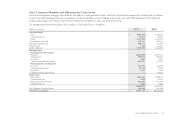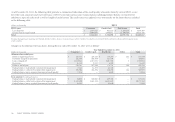Navy Federal Credit Union 2011 Annual Report Download - page 22
Download and view the complete annual report
Please find page 22 of the 2011 Navy Federal Credit Union annual report below. You can navigate through the pages in the report by either clicking on the pages listed below, or by using the keyword search tool below to find specific information within the annual report.NAVY FEDERAL CREDIT UNION6
Note 1: Summary of Signicant Accounting Policies
Navy Federal Credit Union is a member-owned, not-for-prot
nancial institution formed to provide a variety of savings and
lending programs to those individuals in its eld of membership,
which includes military and civilian personnel who are or were
employed by the Department of the Defense and their families.
Navy Federal Financial Group (NFFG) is a wholly-owned credit
union service organization that provides investment, insurance
and other nancial services to members of Navy Federal Credit
Union. Navy Federal Brokerage Services and Navy Federal Asset
Management are wholly-owned subsidiaries of NFFG. In this Annual
Report, Navy Federal Credit Union and NFFG (consolidated) are
called Navy Federal.
Navy Federal evaluated subsequent events through March 19, 2012,
the date its nancial statements were issued.
THE SIGNIFICANT ACCOUNTING POLICIES ARE:
Basis of Accounting
Navy Federal maintains its accounting records on the accrual basis,
which is in accordance with accounting principles generally accepted
in the United States of America (GAAP).
Consolidation
e consolidated nancial statements include the accounts of
Navy Federal Credit Union and NFFG. Signicant intercompany
accounts and transactions were eliminated in consolidation.
Use of Estimates
e preparation of consolidated nancial statements in conformity
with GAAP requires management to make estimates and
assumptions that aect the reported amounts of assets, liabilities,
revenues and expenses and the disclosure of contingent assets and
liabilities in the consolidated nancial statements and accompanying
notes. Actual results could dier from those estimates.
Business Combinations
In December 2007, the FASB released Accounting Standards
Codication (ASC) 805-10-05, Business Combinations (formerly
known as SFAS No. 141R), eective for business combinations
with acquisition dates aer the beginning of the rst annual
reporting period beginning on or aer December 15, 2008. is
ASC requires that all business combinations be accounted for by
applying the acquisition method by measuring assets obtained and
liabilities assumed in a business combination at fair value on the
acquisition date.
Navy Federal applied ASC 805-10-05 on October 1, 2010 with the
acquisition of United Services of America Federal Credit Union
(USAFCU). See Note 2 for details.
New Accounting Pronouncements
Navy Federal adopted Accounting Standards Updates (ASU) 2010-
20 (released July 2010) for the 2011 annual reporting period. e
purpose of this ASU is to enhance disclosures and provide additional
information to assist nancial statement users in assessing an entity’s
credit risk exposures and evaluating the adequacy of its allowance for
credit losses. ASU 2010-20 is entirely disclosure-related and had no
impact on Navy Federal’s nancial position or results of operations.
Beginning with the scal year ended December 31, 2011,
Navy Federal early adopted ASU 2011-180, Testing Goodwill for
Impairment. ASU 2011-180 permits an entity to make a qualitative
assessment of whether it is more likely than not that the fair value
of a reporting unit is less than its carrying amount. If, under this
assessment, it is likely that the fair value of a reporting unit is less
than the carrying amount, an entity is required to perform the two-
step impairment test pursuant to ASC 350-20, Intangibles—Goodwill
and Other (formerly known as FAS No. 142).
Cash
For purposes of the consolidated nancial statements, cash includes
cash and balances due from banks and other credit unions.



